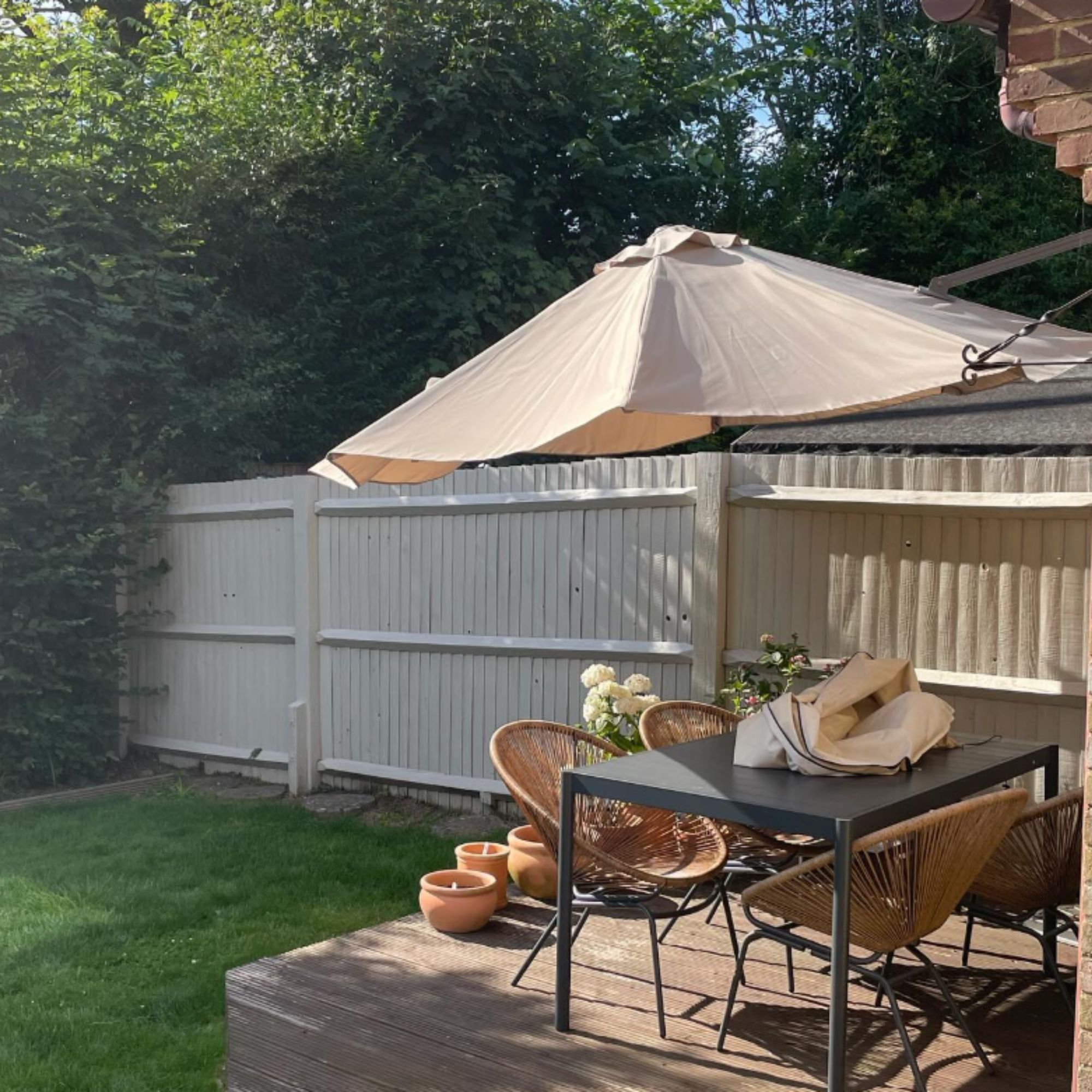What is a party wall agreement and could you be breaking the law by not having one?
Do you know what a party wall agreement is? If you are extending or renovating this is something you should brush up on – and our guide is here to help


Charlie Luxton
While you might have heard of one, you might find that you're not entirely sure what is meant by a party wall or a party wall agreement. You might also be wondering whether it is something you'll need to know about when building an extension or carrying out a renovation project?
If your property features a wall – or walls – that are shared between you and any neighbours, it makes sense that you will need to keep your neighbours informed of any work you are planning that will affect said wall – and this is where the Party Wall Act, and a party wall agreement come in. And you'll need to know if it's illegal to ignore the Party Wall Act.
In this guide, we asked experts in the world of planning permission and house design to offer their top advice when it comes to how to get a party wall agreement in place, the key terminology you need to know and what do to should things not run quite to plan.
What is a party wall?
'A party wall separates two adjoining buildings. It also includes ceilings between flats and garden boundary walls, essential structures that are shared between two properties,' explains architectural designer and renovation expert Charlie Luxton.
'Party walls are a fascinating insight into how people can co-operate and make life easy for themselves – or not,' muses Charlie. 'Like planning permission, party walls bring out the best and worst in people, occasionally resulting in simmering resentment or outright war.'

Charlie Luxton is an architectural designer who juggles his roles as director of Charlie Luxton Design, TV presenter and public speaker. Charlie regularly gives talks and presentations to a wide range of audiences about all aspects of the built environment and sustainability.Charlie is passionate about the environment and communicating his enthusiasm for sustainable architecture and design. He has combined his design work with writing and presenting television programmes for the last twenty years and fronts Building the Dream and Homes by the Sea for More4, amongst others.
What is the Party Wall Act?

The Party Wall etc. Act 1996 is a piece of legislation that was brought in to help avoid disputes between neighbours.
'The idea of a ‘shared’ anything can be problematic so there is government legislation, The Party Wall Act, designed to protect and control what can be done to this jointly owned thing,' explains Charlie Luxton.
Get the Ideal Home Newsletter
Sign up to our newsletter for style and decor inspiration, house makeovers, project advice and more.
What does the Party Wall Act cover?
Before getting started on your project, make sure you are completely clear on what kind of works the Party Wall Act covers – as well as what you can do without the need for an agreement.
You'll need a party wall agreement if you are planning building work or home improvements that could affect a shared wall or boundary. Planning consultant Simon Rix from Planix.UK says: 'Common examples of when you might need one include:
- Building a new wall at or on the boundary between two properties.
- Making alterations or structural changes to a shared wall (e.g., knocking through, underpinning).
- Excavating near the foundation of a neighbouring property (within 3 to 6 meters) — you'll need to understand the Party Wall Act 3m rule.
- Loft conversions that affect a party wall or involve inserting beams.

Simon is a professional planning consultant, who began his career working in local government in the 1990s. He was a council officer and later an elected councillor, so he knows how the planning system works from both sides. He went on to set up Planix.UK Planning Consultants Ltd; a consultancy company that advises self builders, home extenders and those taking on small to medium-sized building projects on planning permission.
It is also important to be aware that not all works affecting the shared wall will require a party wall agreement so you might just find your small kitchen extension ideas won't need one at all.
'Minor work like rewiring, repairs, re-plastering, decorating or hanging shelves can be done without agreement,' explains Charlie Luxton. 'Anything more significant and the Act comes into play and it is essential you either read it, or the detailed summaries you can find online, before you start any work to or near party walls. Before we get into these more invasive actions, it’s important to remember that laws are usually just a formalisation of being a decent and respectful person.'

What is a party wall agreement?
If you find that you have a shared wall that will be affected by your extension ideas, you will need to get a Party Wall Agreement in place.
'A party wall agreement is a formal, written agreement between property owners who share a boundary, typically involving works that affect a party wall or structure,' explains Simon Rix. 'The agreement details the type of work planned, the timelines, and how the project will be carried out to prevent or minimise damage to the neighboring property. It may also include the appointment of a party wall surveyor to mediate and ensure compliance with the Act.'
'The purpose of the agreement is to protect both property owners from disputes and potential damage,' adds Charlie Luxton. 'It sets clear expectations and prevents misunderstandings, ensuring that work is done properly and with consideration for both properties.' It can also be crucial to determine who is responsible for repairing a party wall should damage occur.
How do I get a party wall agreement?

Once you have ascertained that a party wall agreement will be required, the good news is that it isn't usually too hard to get one in place.
'To start, the property owner intending to carry out the work must serve a 'party wall notice' to the adjoining owner, at least two months before work begins,' explains Simon Rix.
To serve your neighbours with a party wall notice you need to write to them and include not only you contact information, but also detailed information on the work you plan on undertaking, whether that is to turn your kitchen extension ideas into a reality or add a small side return. You also need to include dates of when work will be carried out and any access requirements that affect their land. You can download party wall notice templates from the Party Wall section on the Government website.
'The neighbor has 14 days to respond, either by consenting, dissenting, or doing nothing,' picks up Simon Rix. 'If they dissent or fail to respond, a party wall surveyor must be appointed to draw up the agreement. A single agreed-upon surveyor can represent both parties, or each party can appoint their own surveyor. The surveyor(s) will assess the situation, prepare the agreement, and ensure that the work proceeds smoothly.'
FAQs
Is a party wall agreement a legal requirement?

Many homeowners are unclear on whether a party wall agreement is just a nicety or a legal requirement – so which is it?
'A party wall agreement is a legal requirement under the Party Wall etc. Act 1996 when you intend to carry out works that fall within the scope of the Act,' clarifies Simon Rix. 'If you start work without obtaining an agreement, the affected neighbour can seek an injunction to stop the work, which can delay your project and result in additional costs.
'If work begins without a party wall agreement and one is required, the neighboring property owner can seek legal redress,' further warns Simon. 'This can involve stopping the work via an injunction and potentially pursuing a claim for damages.'
You may be able to get a retrospective party wall agreement after the work has been done, which may be required to settle any dispute between you and your neighbour and ensure any damage is repaired.
How can I remain on good terms with my neighbours during building work?
Whether you are wondering can I paint my side of a neighbour's fence or are wondering whose job it is to cut a shared hedge, you should try to remain on good terms with your neighbours at all costs – it all comes down to clear communication.
'This is how I recommend you approach any work on a party wall,' advises Charlie Luxton. 'As soon as you are thinking of doing work to your home that may, in a worst-case scenario, damage your party wall then go and see your neighbour. Explain what you want to do and ask them if you can take photos of the current condition of the wall/ceiling to carefully document any cracks, damp, damage to decoration etc. These photos can be shared so there is a clear record before any work begins.
'For example, re-plastering that may need some existing plaster hacking off by hand is allowed by the Act, while mechanically removing plaster isn’t, as this can result in a few days of banging and crashing,' continues Charlie. 'This may cause both a nuisance and some cracking to your neighbour’s side of the wall. If your neighbour is not expecting the work they may get cheesed off, go and inspect their side of the wall noticing cracks that may or may not have been there before. If they are expecting the work and there are photos, all this is avoided.'

Charlie goes on to explain the other benefits keeping your neighbours onside can have.
'When you appoint a party wall surveyor, your neighbour has the right to refuse to use your surveyor and demand their own. You, as the person serving the notice pay for both!' he warns. 'They can also refuse to sign anything and, while the Act has mechanisms to negate this, it takes time and money. Open and early communication is by far the most effective way to head off these potential issues.
'Building projects are stressful enough without neighbour conflict. If you understand the Party Wall Act and follow its structure carefully you should avoid it getting ugly. If it does, at least you're not the one to blame!'

Natasha has been writing about everything homes and interiors related for over 20 years and, in that time, has covered absolutely everything, from knocking down walls and digging up old floors to the latest kitchen and bathroom trends. As well as carrying out the role of Associate Content Editor for Homebuilding & Renovating for many years, she has completely renovated several old houses of her own on a DIY basis.
- Charlie LuxtonArchitectural Designer and renovation expert
-
 AI is heading into the kitchen – should you be considering upgrading to a smart appliance?
AI is heading into the kitchen – should you be considering upgrading to a smart appliance?They claim to make your life easier, and daily chores more efficient
By Ginevra Benedetti
-
 Garden colour schemes that work with Cuprinol's Natural Stone – 5 beautiful palette pairings
Garden colour schemes that work with Cuprinol's Natural Stone – 5 beautiful palette pairingsThe best colour matches, from sage green to dusky pink
By Sophie King
-
 Is your porch missing something to sit on? These 7 porch seating ideas will solve that issue for you in style
Is your porch missing something to sit on? These 7 porch seating ideas will solve that issue for you in styleThese are the top porch seating ideas to make your space more functional and stylish at the same time
By Sara Hesikova